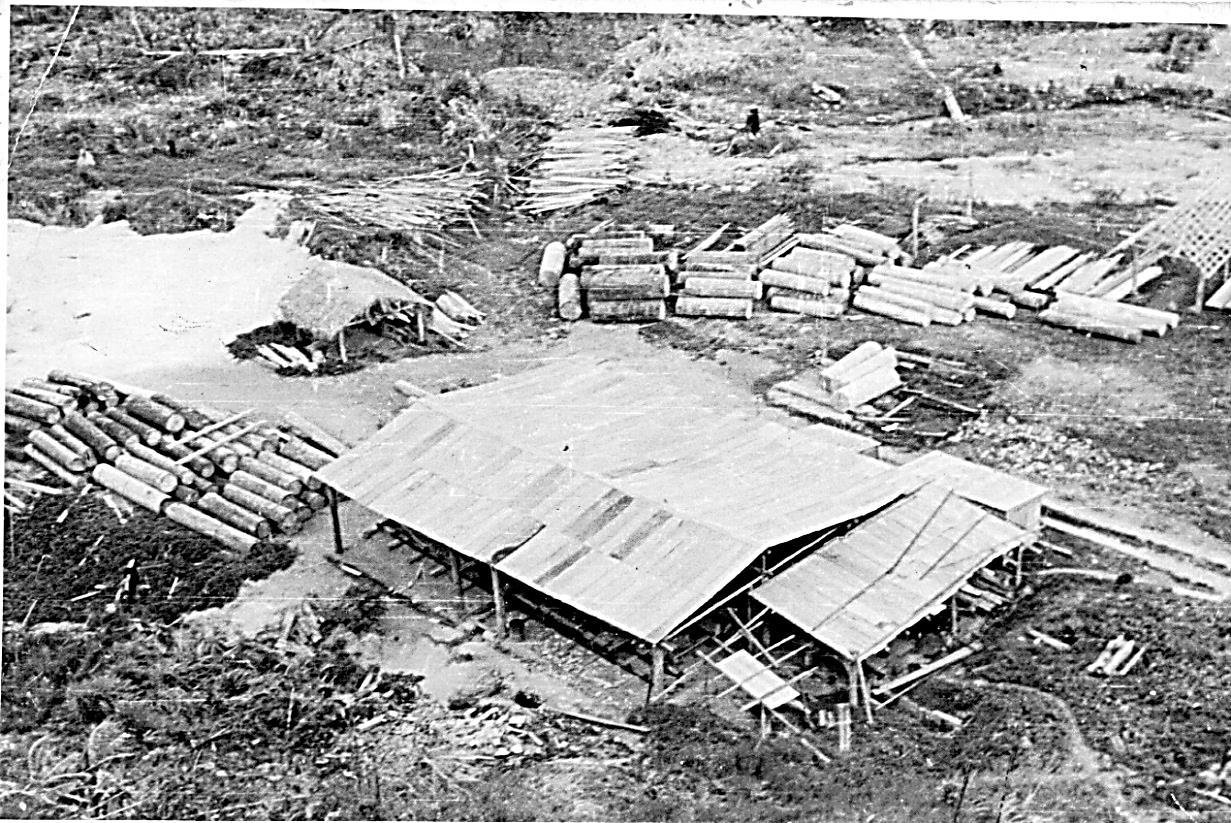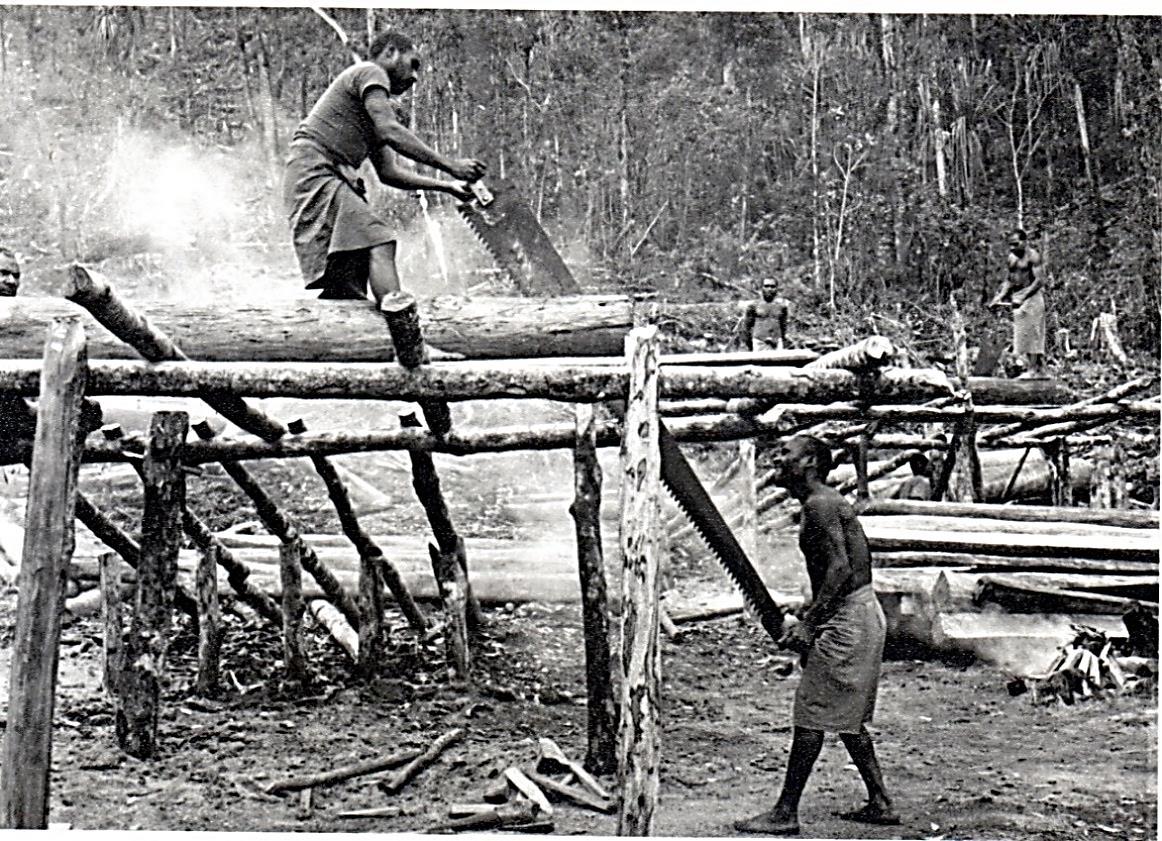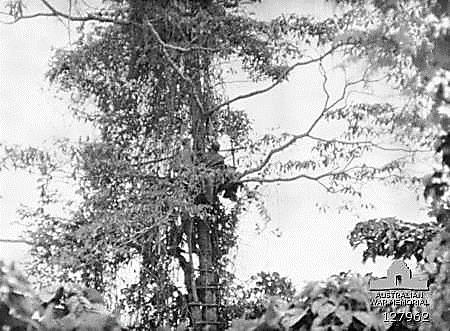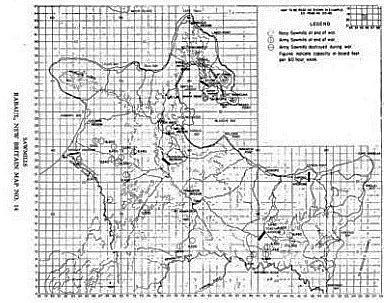
3 minute read
1939-1945 WORLD WAR 2 - Sawn Timber and Round timbers
from PNGAF MAG ISSUE #9J W3 of19th Nov 2022 PNG WOODS Phases of Industrial Development till 1975
by rbmccarthy
1939-1945 WORLD WAR 245 - Sawn Timber and Round timbers 46 . 47
NGG Limited mouth Binatang Creek Sept 1941 (courtesy Jim Cavanaugh) Wau.
Advertisement
Pit sawing PNG48. Source Ken Granger.

45 Ref: PNGAF Mag # 2 of 7/10/20 p 27; Ref: PNGAF Mag # 3 of 3/11/20 p 40 46 Personal communication Ken Granger 8/3/19. Ref: PNGAF Mag # 3 of 3/11/20 p 12 47 Ref: PNGAF Mag # 3 of 3/11/20 p 1-116. Ref: PNGAF Mag # 9B-5 of 21/4/21 p 11. 48 Ref PNGAF Mag # 9B of 25/2/21 p2
With the threat of war in the Pacific, McAdam enlisted in the Australian Military Forces on 19th September 1940 at Wau together with Jim Cavanaugh and Reay Weidenhofer. He began full time duty with New Guinea Volunteer Rifles on 22nd January 1942 and promoted to sergeant. After the Japanese invaded Salamaua in March, he led a party of scouts including Jim Cavanaugh, which established an observation post within a mile (1.6 km) of enemy positions. The intelligence gathered by the team was crucial to the success of the Australian raid in June. McAdam acted as a guide in the foray. Transferred to ANGAU in September, he was awarded the Military Medal for his outstanding service at Salamaua.

Observation Tree Mubo.
Photo Credit Australian War Memorial 1942.
L to R Geoff Archer (gold miner Wau), Jim Cavanaugh (forester,) Jim McAdam (forester). Photo taken by war photographer Damien Parer in July 1942 just after the famous Salamaua raid.
Photo Credit Australian War Memorial. 49

The outbreak of World War II ended all civilian activities in the Territories of Papua and New Guinea and slowed down forestry development. The Japanese attack stopped all activity
49 Details from Linda Cavanaugh Manning 9 April 2019
for a year but thereafter stimulated development.50 The Japanese Forces took over many New Guinea sawmills in addition to building their own mills for their military needs.
Details from the US Strategic Bombing Survey51 of the campaign against Rabaul in 1942-5 showed the locations of 29 Japanese sawmills in Rabaul. It was reported that the Japanese forces on New Britain took advantage of the large stands of timber there to supply themselves locally with much of their building material. Both Army and Navy operated sawmills and in 1943 there were some 20 of these with a total output of about 185,000 board feet per week. Presumably, similar Japanese sawmilling operations were operated in areas as Wewak and Madang, The demands and devastation caused by the war, the expanded services needed to cater for the immediate development of the community, plus an increased demand for sawn timber in Australia provided the impetus to expand the scope of the forests from its traditional role. Owing to the shortages of supply and difficulties with shipping, it was decided to produce as much as possible of these requirements in the islands themselves. In 1943, ANGAU reorganised the three pre-war mills and established a fourth at Waigani near Milne Bay. Many engineering units established small operations. The Americans brought in sawmilling units. The Australian Government recalled the three military Forestry Companies from England and threw them into the fight for timber in New Guinea early in 1944. The New Zealand Air Force also had sawmilling units attached.

50 Encyclopaedia of PNG, Vol 1 A-K, Peter Ryan (General Editor), Melbourne University Press in association with the University of Papua New Guinea, 1972, Dewey 919.5003, ISBN 0 522 84025 6. 51 Personal communication Ken Granger 10/5/2018.

